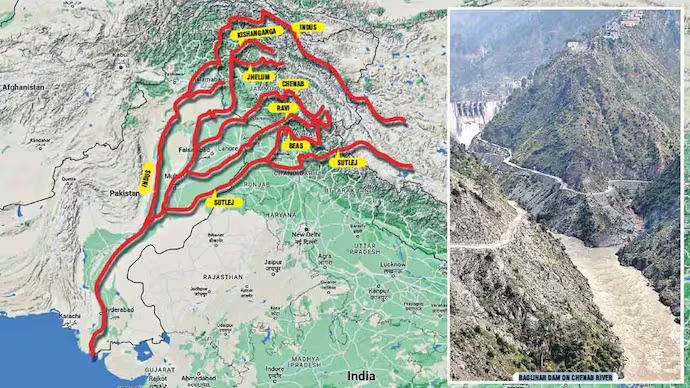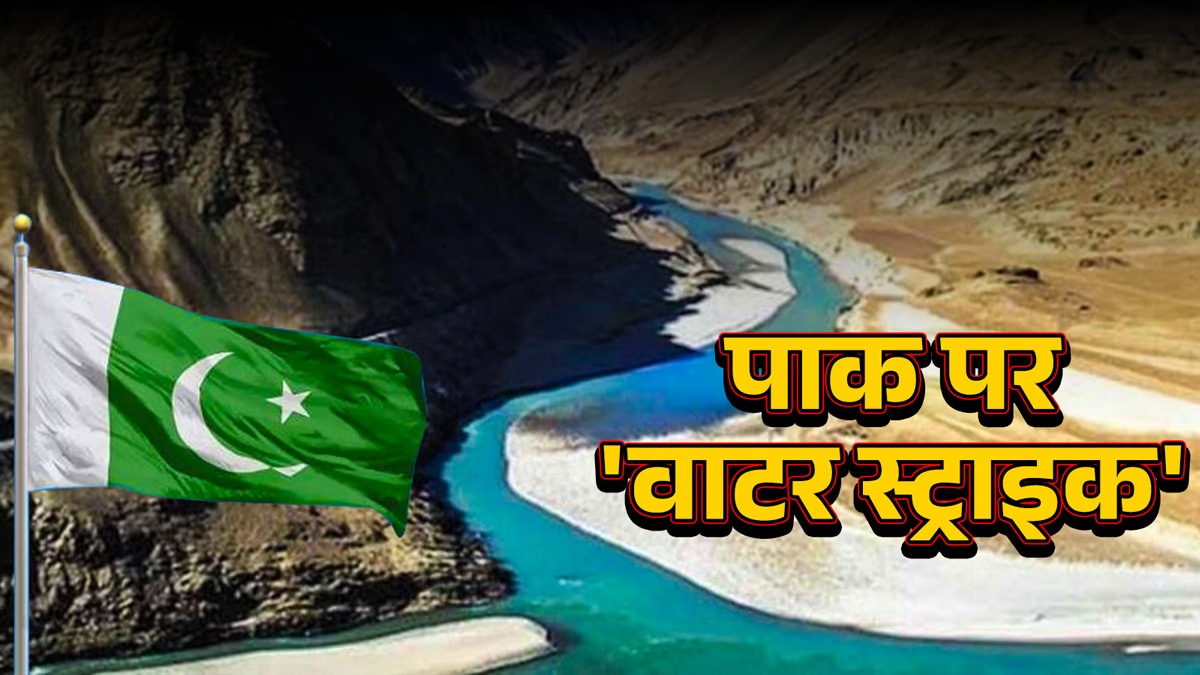In the wake of the tragic terrorist attack in Pahalgam's Baisaran Valley, which claimed the lives of 26 individuals, the Indian government has taken bold steps. During a meeting of the Cabinet Committee on Security, held on Wednesday, it was decided to suspend the Indus Water Treaty of 1960 with immediate effect. The rivers of Indus and its tributaries, vital for Pakistan, are now under India's control, leaving millions in Pakistan yearning for water. These rivers flow through four countries and sustain the water needs of more than 210 million people.
The Impact of the Indus Water Treaty on Pakistan...
- A staggering 80% of Pakistan's cultivable land (16 million hectares) relies on the Indus river system.
- An astonishing 93% of this water is utilized for irrigation, essential for agriculture.
- This sustenance reaches over 237 million individuals, including 61% of Pakistan's Indus basin population.
- The key Pakistani cities of Karachi, Lahore, and Multan depend on these rivers.
- Power projects like Tarbela and Mangla are tied to this river system.
- Suspending the Indus Water Treaty may trigger a decline in Pakistan's food production, threatening millions with food insecurity.
- Urban water supplies in Pakistan would face significant disruptions, leading to potential civil unrest.
- Electricity generation would halt, casting darkness over industries and urban areas.

Source: aajtak
Understanding the Indus Water Treaty
The Indus Water Treaty was negotiated between India's then Prime Minister Pandit Jawaharlal Nehru and Pakistan's General Ayub Khan in Karachi in September 1960. According to this 62-year-old treaty, India receives 19.5% of the water from the Indus and its tributaries, while Pakistan receives approximately 80%. India utilizes about 90% of its share. This treaty divided the Indus Valley into six rivers, with mandatory annual meetings between the countries under the Indus Water Commission.
The last meeting on this treaty was held on May 30-31, 2022, in New Delhi, described as cordial by both nations. India holds rights over the eastern rivers, while Pakistan was granted rights over the western rivers. The World Bank mediated this agreement. Of the 168 million acre-feet allotted to India from the Sutlej, Beas, and Ravi rivers, 33 million acre-feet are annually allocated, while the rest flows into Pakistan. Meanwhile, Pakistan gets around 135 million acre-feet from the Indus, Jhelum, and Chenab rivers designated as western rivers.
The Indus river system encompasses the main river along with five tributaries: Ravi, Beas, Sutlej, Jhelum, and Chenab. The Ravi, Beas, and Sutlej are known as eastern rivers, while Chinabab, Jhelum, and Indus are termed western rivers. This water is critical for both India and Pakistan, making the treaty suspension a significant blow to Pakistan.
Experts Question the Treaty
Several experts have labeled the Indus Water Treaty as a historical oversight, advocating for India to revise the treaty and allocate water from the Indus and its tributaries appropriately. Pakistan's recurrent acts of terrorism against India emphasize that water and blood cannot flow together. Though Nehru intended the treaty to foster good relations, Pakistan has often dashed those hopes. The Indian government's decision to suspend the treaty sends a strong and strategic message to Pakistan.
The Water Dispute's Origins
The water dispute began post-Independence in 1947 when India initially halted water supply in 1948, creating challenges for Pakistan. Subsequently, a temporary agreement was reached. In 1949, David Lilienthal, an American expert, suggested resolving the water issue on technical and commercial grounds rather than political, recommending World Bank's assistance.
The Agreement Between Nehru and Ayub
In September 1951, Eugene Robert Blake, the president of the World Bank, agreed to mediate. After nearly a decade of negotiations, a water agreement was signed between India and Pakistan on September 19, 1960. This historic accord, now known as the Indus Water Treaty 1960, was signed by India's then Prime Minister Jawaharlal Nehru and Pakistan's then President Ayub Khan in Rawalpindi.
Applicability of Treaty Provisions from 1961
On January 12, 1961, the treaty's provisions were enacted, peacefully resolving a significant bilateral conflict. The water distribution of the six rivers was planned, with India securing complete rights over the three eastern rivers: Ravi, Beas, and Sutlej. The flows of the three western rivers: Jhelum, Chenab, and Indus, were designated for Pakistan's unrestricted use. India retains potential usage of the western rivers' waters.




